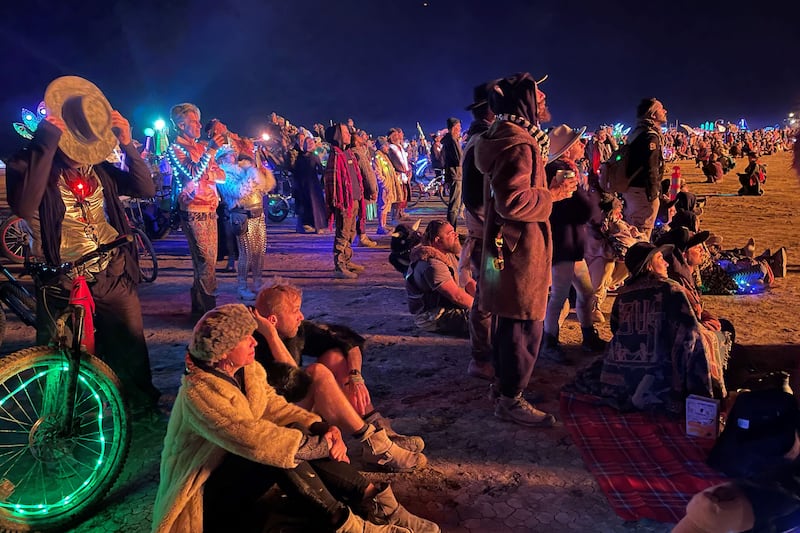Organisers of the Burning Man festival have announced an “exodus” of thousands of attendees stranded in the Nevada desert after torrential rains transformed an event that has become a magnet for technology executives, venture capitalists and social media influencers into a “nightmare” of muck and broken toilets.
“Exodus operations have officially begun ... the driving ban has been lifted,” the organisers of the event in Black Rock City, Nevada, said, days after they urged attendees to shelter in place and conserve food and water as deepening mud shut roads away from the venue.
Roughly 64,000 people remained on the site on Monday afternoon, with wait times to leave exceeding five hours, according to the organisers.
The Pershing County Sheriff’s Office, the local police authority, said it was investigating the death of Leon Reece (32), who died at Burning Man on Friday evening. No immediate cause of death could be determined, the sheriff said.
READ MORE
News that roads away from the event would reopen as the mud dries ends days of misery for thousands of festival-goers attending what was once the US’s signature counterculture event, but now attracts celebrities alongside older hippies and families.
Burning Man, which began in San Francisco more than three decades ago with a few dozen people witnessing the effigy’s immolation, moved to a barren stretch of the Nevada desert in 1990. It draws tens of thousands of attendees who travel in trailers or even private aircraft to a “playa” to witness a dizzying agenda of electronic music and light shows, punctuated by a “Man Burn” and a similar razing of a “Chapel of Babel”.

Organisers say the event aims to “generate society that connects each individual to his or her creative powers”.
This year’s Burning Man aimed to celebrate the animal world and challenge the belief that “somehow, despite all evidence to the contrary, mankind is somehow not part of the animal kingdom”.
But heavy rains intervened, transforming the normally parched landscape that can accommodate air-conditioned recreational vehicles and campers into a muddy “hellscape”, as one attendee described it on TikTok, with broken toilets surrounded by six inches of muck.
Some famous attendees such as comedian Chris Rock and former US solicitor general and current Hogan Lovells partner Neal Katyal hiked for miles to flee the muck and find road transport to Reno.
“People are having to change their flights and work schedules if they can’t work remote,” Angie Peacock (44), a holistic health coach from Missouri, told the Financial Times.
The portable toilets have started to work again, but not cleaning facilities, said Peacock, who has not showered in 10 days. Peacock and others in her camp have passed the time playing music and participating in naked mud runs.
Music executive Bryan Freeman (54) and his travel partner bought a $94,000 motorhome and drove from Los Angeles to Burning Man, where he celebrated his birthday in the “beautiful” playa that was lit like Times Square. But that changed on Friday when the deluge of cold rain brought “horrific” and “miserable” conditions, he told the Financial Times.
After portable toilets overflowed, rumours of disease surfaced on social media, causing Burning Man’s organisers to state “online rumours of transmissible illnesses in Black Rock City are unfounded and untrue”.
Freeman’s travel partner had planned to leave by private jet on Monday from the makeshift airport set up by Burning Man, but his flight was postponed to Tuesday. But he said one of the event’s 10 principles, “radical self-reliance”, meant most attendees had packed sufficient supplies – including “enough food and alcohol” to last through Monday.
“I will be back,” Freeman said. “If you ask people out here what their biggest fear was, it wouldn’t be that something bad is going to happen on the playa ... It would be that this event goes away.”
– Copyright The Financial Times Limited 2023














